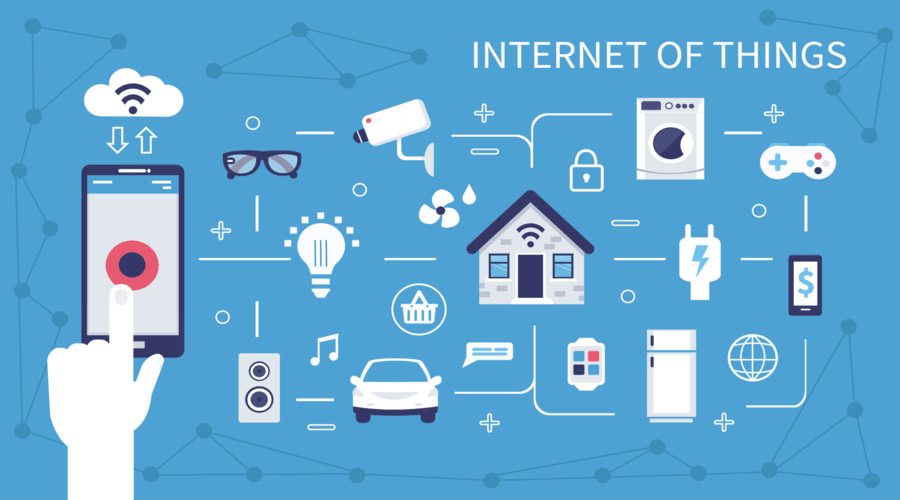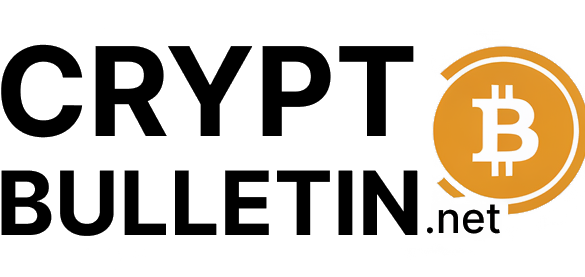The rapid advancement of technology has given rise to the Internet of Things (IoT), where everyday objects are interconnected, collecting and exchanging data. With the emergence of blockchain technology, the potential for IoT applications has expanded, offering enhanced security and trust. However, ensuring privacy and data protection remains a crucial challenge in this evolving landscape. In this article, we will explore the intersection of blockchain and IoT, highlighting the importance of privacy and data protection measures to safeguard individuals and organizations in this era of innovation.
Introduction: The Convergence of Blockchain and IoT
The convergence of blockchain and IoT technologies opens up new possibilities for secure and decentralized data exchange. Blockchain, often associated with cryptocurrencies, is a distributed ledger technology that allows for transparent and tamper-resistant recording of transactions. When integrated with IoT devices, blockchain provides a trust layer that can enhance privacy and data protection.
Understanding the Challenges of Privacy and Data Protection
- Vulnerabilities in Traditional IoT Networks:
- Centralized nature of traditional IoT networks.
- Single points of failure and unauthorized access risks.
- Increased susceptibility to data breaches and privacy violations.
- Privacy Risks in the IoT Ecosystem:
- Vast amount of personal and sensitive data collected by interconnected devices.
- Lack of proper safeguards leading to data interception and exploitation.
- Potential compromise of privacy and personal security.
- Data Breaches and Security Concerns:
- Common occurrence of data breaches in centralized data storage.
- Amplified risks in the interconnected IoT environment.
- Need for robust security measures to prevent unauthorized access.
- Immutable and Transparent Data Storage:
- Blockchain technology providing tamper-resistant data storage.
- Each transaction or data entry recorded as a block.
- Decentralized and transparent ledger ensuring data integrity.
- Decentralization and Trust:
- Decentralized network eliminating single points of failure or control.
- Enhanced trust and security in the IoT ecosystem.
- Consensus mechanisms establishing reliability and trustworthiness.
- Smart Contracts for Data Control:
- Self-executing contracts enforcing predefined rules and conditions.
- Automation of processes without intermediaries.
- Ensuring data control and privacy rules through smart contracts.
- Identity Management and Authentication:
- Robust authentication mechanisms for IoT devices and users.
- Secure identity management protocols to prevent unauthorized access.
- Mitigation of risks associated with identity theft or impersonation.
- Data Encryption and Access Control:
- Encryption at various levels for secure data communication and storage.
- Strong encryption algorithms protecting against unauthorized interception.
- Access control mechanisms limiting data access to authorized entities.
- Consent Management and Data Ownership:
- Implementation of mechanisms for obtaining and revoking consent.
- Transparent record of data ownership and usage on the blockchain.
- Empowering individuals with control over their personal data.
- GDPR Compliance and Its Impact:
- Importance of complying with GDPR regulations.
- Protection of personal data and privacy rights.
- Implementation of data minimization and transparency practices.
- Emerging Frameworks and Standards:
- Development of best practices and guidelines for secure IoT implementations.
- Adherence to emerging frameworks and standards.
- Ensuring privacy and data protection through standardized protocols.
- Innovations in Privacy-Preserving Technologies:
- Advancements in privacy-preserving technologies for IoT.
- Zero-knowledge proofs, homomorphic encryption, and differential privacy.
- Secure and private data processing while maintaining the benefits of blockchain and IoT.
- Collaboration for Secure IoT Ecosystems:
- Collaboration between stakeholders for secure IoT ecosystems.
- Technology providers, policymakers, industry experts, and end-users.
- Development of comprehensive privacy frameworks and standardized security protocols.
- Potential Risks of Storing Sensitive Data on the Blockchain:
- Exposure of personal information if private keys are compromised.
- Vulnerabilities in smart contracts.
- Permanence of data on the blockchain.
- Importance of Balancing Security and Privacy:
- Balancing robust security measures with the preservation of privacy.
- Striking a balance between data protection and data usability.
- Ensuring that privacy measures do not hinder the benefits of IoT and blockchain technologies.
The Role of Blockchain in Enhancing Privacy and Data Protection
Immutable and Transparent Data Storage
One of the key advantages of blockchain technology is its ability to provide immutable and transparent data storage. Each transaction or data entry is recorded as a block and linked together in a chain, creating a decentralized and tamper-resistant ledger. This feature ensures that once data is recorded on the blockchain, it cannot be altered or deleted without consensus from the network participants. This immutability enhances the security and integrity of IoT data, reducing the risk of unauthorized modifications or tampering.
Decentralization and Trust
Blockchain operates on a decentralized network, where multiple participants, known as nodes, maintain copies of the blockchain ledger. This decentralized nature eliminates the need for a central authority, reducing the risk of a single point of failure or control. In the context of IoT, decentralization enhances trust and security, as there is no single entity with complete control over the data. The consensus mechanisms used in blockchain ensure that data is validated and agreed upon by the network participants, establishing trust and reliability in the system.
Smart Contracts for Data Control
Smart contracts are self-executing contracts with predefined rules and conditions encoded on the blockchain. These contracts can automate various processes and actions based on predetermined triggers, eliminating the need for intermediaries. In the context of IoT, smart contracts can be utilized to enforce data control and privacy rules. For example, a smart contract can specify the conditions under which certain data can be accessed, ensuring that only authorized parties can retrieve or use the data. This level of control enhances privacy and data protection in the blockchain-enabled IoT ecosystem.

Implementing Privacy-Enhancing Mechanisms in Blockchain-Enabled IoT
Identity Management and Authentication
Identity management plays a crucial role in ensuring privacy and data protection in the blockchain-enabled IoT environment. Robust authentication mechanisms, such as cryptographic keys or biometric authentication, can be employed to verify the identity of IoT devices and users. By implementing secure identity management protocols, the risks of unauthorized access and data breaches can be mitigated.
Data Encryption and Access Control
Encrypting data at various levels, including device-to-device communication and storage, adds an extra layer of security in the IoT ecosystem. Strong encryption algorithms protect sensitive information from unauthorized interception and ensure that only authorized parties can decrypt and access the data. Access control mechanisms, implemented through smart contracts or permissioned blockchain networks, can further restrict data access to authorized entities, minimizing the risk of data exposure.
Consent Management and Data Ownership
In the era of blockchain-enabled IoT, individuals should have control over their personal data. Consent management mechanisms can be implemented using blockchain and smart contracts to enable users to grant or revoke consent for the collection and use of their data. Additionally, blockchain can provide a transparent record of data ownership and usage, allowing individuals to track and monitor how their data is being utilized within the IoT ecosystem. This level of transparency and control empowers individuals and ensures their privacy rights are respected.
Regulatory and Legal Considerations for Privacy and Data Protection
GDPR Compliance and Its Impact
The General Data Protection Regulation (GDPR) is a comprehensive data protection framework that governs the collection, storage, and processing of personal data. Organizations operating in the blockchain-enabled IoT landscape must ensure compliance with GDPR regulations to protect the privacy rights of individuals. This includes implementing mechanisms for obtaining consent, ensuring data minimization, and providing transparent information about data usage.
Emerging Frameworks and Standards
As the intersection of blockchain and IoT evolves, new frameworks and standards are emerging to address privacy and data protection challenges. Organizations and industry consortia are actively working on developing best practices and guidelines for secure and privacy-preserving IoT implementations. Adhering to these emerging frameworks and standards can help organizations stay at the forefrontof privacy and data protection in the blockchain-enabled IoT domain.
The Future of Privacy in Blockchain-Enabled IoT
Innovations in Privacy-Preserving Technologies
The field of privacy-preserving technologies is continuously evolving to address the challenges posed by blockchain-enabled IoT. Innovations such as zero-knowledge proofs, homomorphic encryption, and differential privacy are being explored to enable secure and private data processing without compromising the benefits of blockchain and IoT. These advancements will play a vital role in shaping the future of privacy in the blockchain-enabled IoT landscape.
Collaboration for Secure IoT Ecosystems
Ensuring privacy and data protection in the era of blockchain-enabled IoT requires collaboration between various stakeholders. This includes technology providers, policymakers, industry experts, and end-users. Collaborative efforts can lead to the development of comprehensive privacy frameworks, standardized security protocols, and effective governance models that address the evolving challenges in the domain. By working together, the stakeholders can create secure and trusted IoT ecosystems that prioritize privacy and data protection.
Conclusion
As blockchain technology continues to merge with the Internet of Things, privacy and data protection remain paramount. The integration of blockchain in the IoT ecosystem offers enhanced security, transparency, and control over data. However, it also presents unique challenges that must be addressed to ensure the privacy of individuals and the protection of sensitive information. By implementing privacy-enhancing mechanisms, adhering to regulatory requirements, and fostering collaboration, we can navigate the complexities of the blockchain-enabled IoT landscape and create a future where privacy and data protection are prioritized.
FAQs
FAQ 1: Can blockchain completely eliminate privacy concerns in IoT?
While blockchain technology provides enhanced privacy and security measures, it does not completely eliminate all privacy concerns in the IoT ecosystem. It serves as a valuable tool to enhance data protection, but other factors such as data encryption, access control, and identity management also play crucial roles in safeguarding privacy.
FAQ 2: Are there any downsides to using blockchain for data protection in IoT?
While blockchain offers numerous benefits, there are some considerations to keep in mind. Blockchain technology can be resource-intensive, requiring significant computational power and energy consumption. Additionally, scalability issues and the need for consensus among network participants can affect the speed and efficiency of data transactions. These factors need to be carefully evaluated when implementing blockchain for data protection in IoT.
FAQ 3: What measures can individuals take to protect their privacy in a blockchain-enabled IoT environment?
Individuals can take several steps to protect their privacy in a blockchain-enabled IoT environment. These include being cautious about sharing personal information, regularly updating and securing IoT devices, using strong and unique passwords, and understanding the privacy policies and data practices of the services and devices they interact with.
FAQ 4: How can organizations ensure compliance with data protection regulations in the context of blockchain and IoT?
Organizations must prioritize compliance with data protection regulations, such as GDPR, in the context of blockchain and IoT. This involves implementing privacy-by-design principles, obtaining explicit consent for data collection and usage, implementing strong access controls and encryption mechanisms, and maintaining transparent records of data processing activities. Collaborating with legal experts and staying updated on evolving regulations is essential to ensure compliance.
FAQ 5: What are the potential risks associated with storing sensitive data on the blockchain?
Storing sensitive data on the blockchain poses risks such as potential exposure of personal information if private keys are compromised, potential vulnerabilities in smart contracts, and the permanence of data on the blockchain. Organizations must carefully assess the sensitivity of the data they store and implement appropriate security measures, such as encryption and access control, to mitigate these risks.


